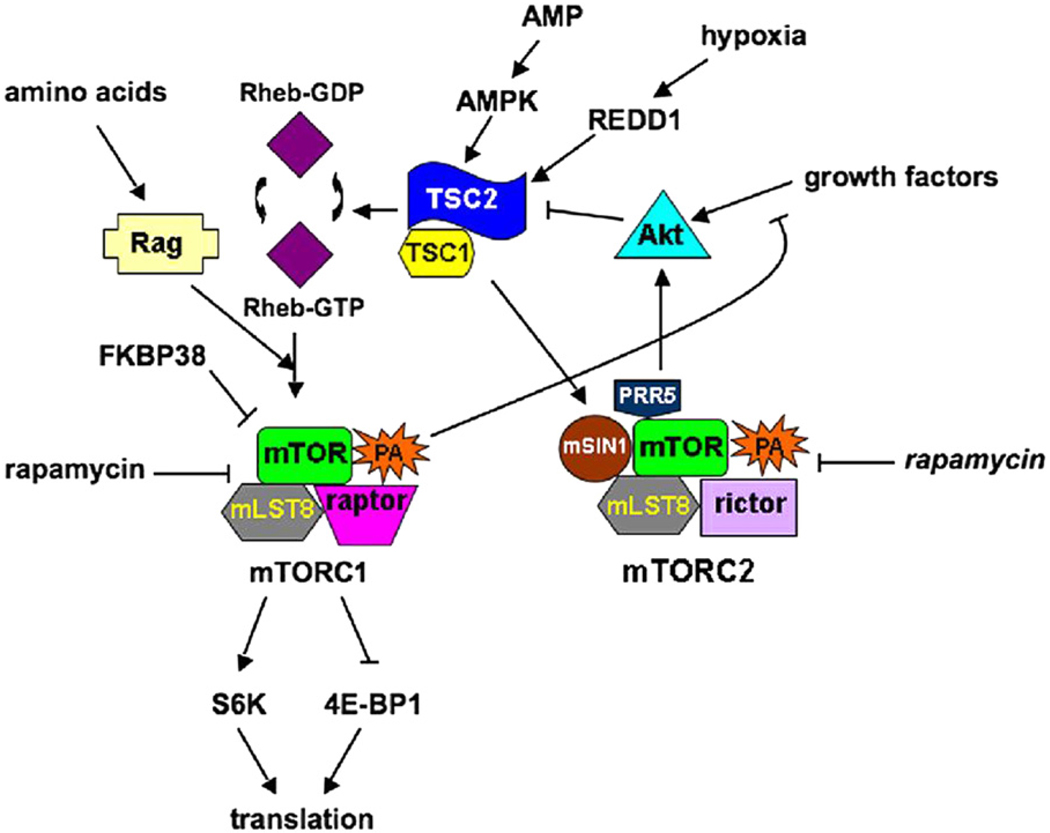Figure 5.
mTOR dependent pathways. Two different complexes contain mTOR: mTORC1, which is acutely sensitive to rapamycin, and mTORC2, which is inhibited by rapamycin (in italics) after prolonged exposure. Activation of mTORC1 leads to protein translation, and thereby cell growth and proliferation, while activation of mTORC2 results in the phosphorylation of Akt. Growth factors, hypoxia, and energy stress affect the status of the TSC1/2 complex, leading to inactivation of the tumor suppressor complex in the presence of growth factors and activation in the presence of stress. TSC1/2 inhibits mTORC1 through its Rheb-GAP activity: Rheb-GTP is necessary for the activation of mTORC1, preventing the interaction of MTOR with its endogenous inhibitor FKBP38. The presence of amino acids stimulates the localization of mTORC1 in Rheb-containing compartments through the actions of Rag-GTPases. mTORC1 is also involved in a negative feedback loop, which blocks growth factor-stimulated phosphorylation of Akt. TSC1/2 activates mTORC2, which then phosphorylates Akt.

